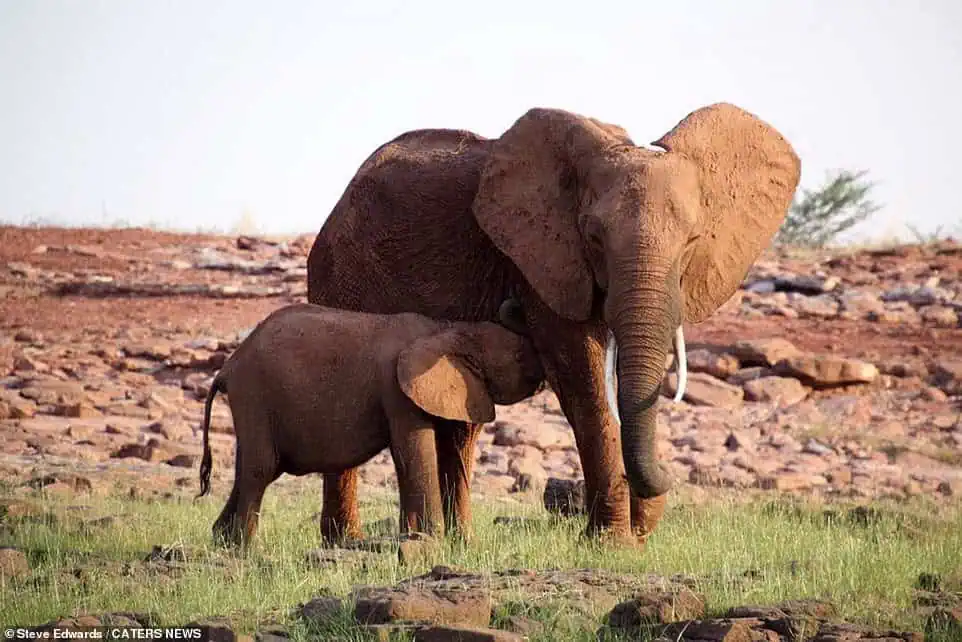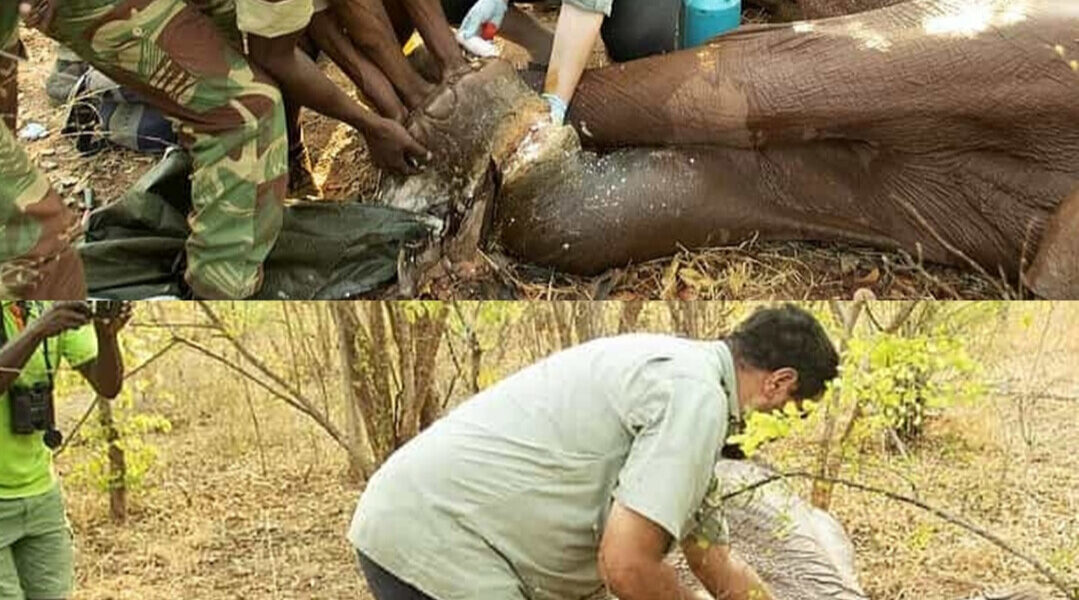In the quiet wilderness of Zimbabwe, a mother elephant named Martha staggered through the bush, her every step a battle against pain. A poacher’s snare, nothing more than a coil of wire, had wrapped itself around her leg. With each movement, it cut deeper, slicing into her flesh until infection began to spread. Once symbols of strength and majesty, her legs now trembled beneath her massive frame. Beside her, a young calf followed anxiously, refusing to leave his mother’s side.

It was a heartbreaking sight—an animal that had roamed free now crippled by human cruelty. Left untreated, Martha’s wound would have led to a slow, agonizing death. And her calf, still dependent on her milk, would have faced the same fate.
But fate intervened.
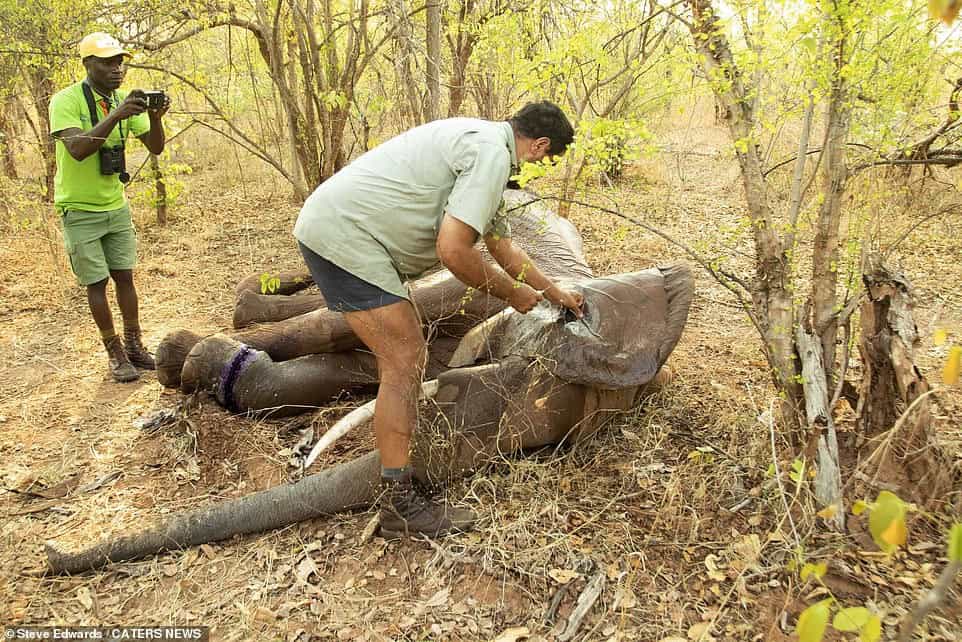
Martha was spotted near Musango Island Safari Camp, limping, weak, and desperate. The camp’s owner wasted no time and called local conservationist Catherine Norton. At 58, Norton had spent her life fighting for Africa’s wildlife, but cases like this never grew easier. “We had to act fast,” she later said. “Without intervention, she would have died.”
Her team raced to Martha’s side, bringing with them hope, medicine, and determination. With precision and care, they sedated the giant, her calf watching nervously as strangers surrounded its mother. The team worked quickly—cleaning the deep wound, disinfecting the raw flesh, and injecting life-saving antibiotics. With cutters, they finally removed the cruel wire that had nearly ended her life.
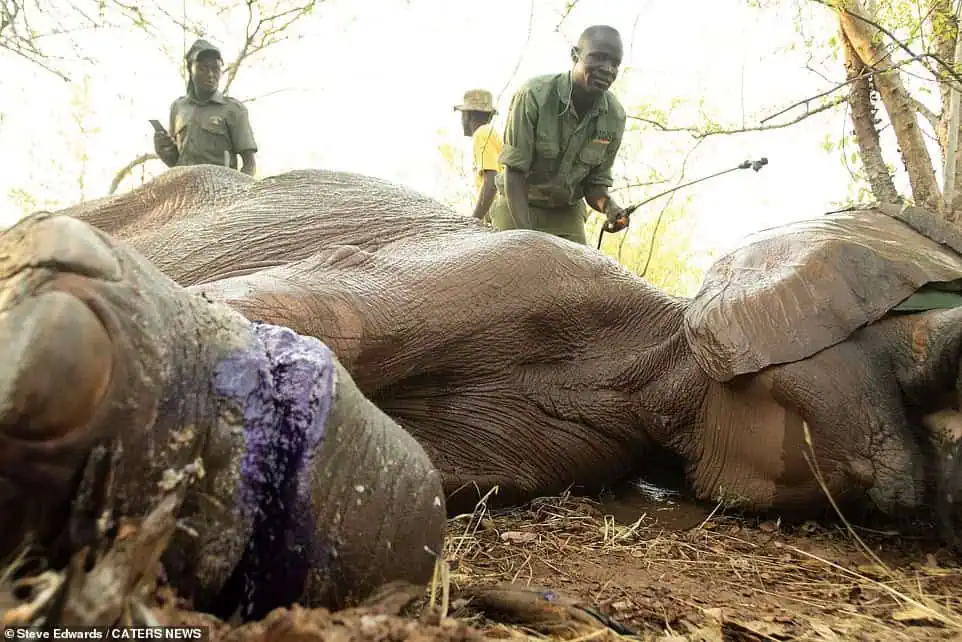
Minutes later, Martha stirred. Slowly, shakily, she rose to her feet. The calf rushed to her side, pressing against her as though to reassure himself that she was still alive. Within moments, mother and child were walking again—together, free of the trap that had nearly destroyed them both.
For Norton, the rescue was bittersweet. While Martha survived, the deeper wound remained: the relentless threat of poaching. “This shows how much damage one wire can do to an innocent animal,” she said. “A single poacher can set up to twenty snares in a day.”

These snares are silent killers. Unlike bullets, which strike quickly, wire traps torture slowly. Though often intended for smaller animals like antelope, elephants, lions, and rhinos are caught too. Their immense strength sometimes helps them break free, but the wire bites into their skin, cutting to the bone, leaving them vulnerable to infection, starvation, or sepsis. Entire herds have been scarred by a single trap. In 2017, a lion died when a snare tore into its stomach and neck—a brutal reminder of how indiscriminate and merciless these devices can be.

Martha’s story could have been another statistic, another silent tragedy buried in the African bush. Instead, it became a story of survival and hope. Because one person noticed her limp. Because a team of rescuers refused to look away. Because compassion proved stronger than cruelty.
As Martha disappeared into the wild again, her calf pressed close to her side, the picture was almost poetic: a mother walking free, carrying not just her calf but the weight of a second chance.
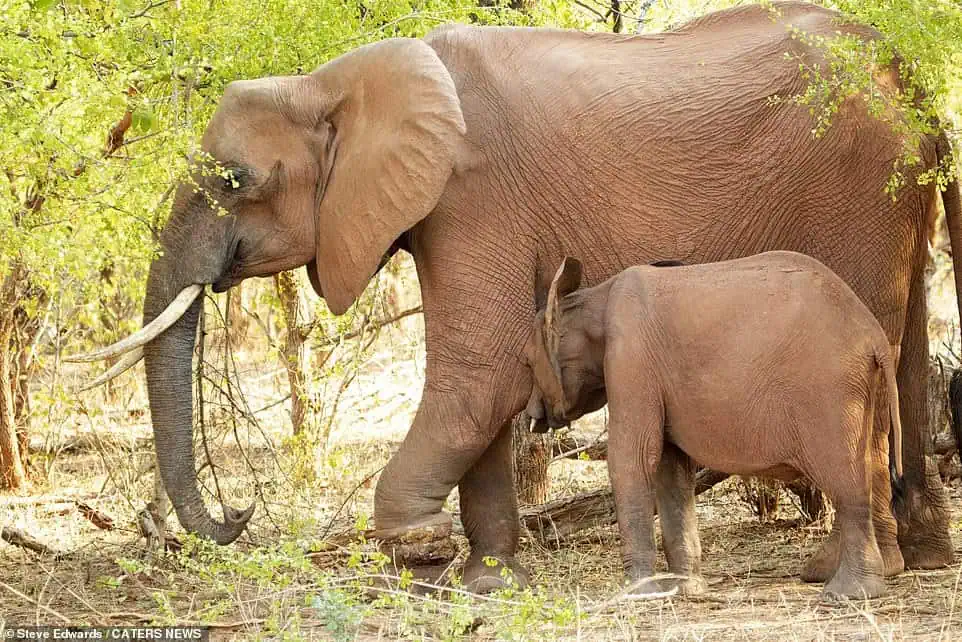
But behind that image is a call to action. For every Martha saved, countless others still suffer unseen. Every snare left unchecked is another tragedy waiting to happen.
Martha lived—and with her, a reminder that saving even one elephant means saving generations that follow.
